
Garment of the Soul
Just as the garb of the soul affects the way it acts in the body, so too all the garbs of the various Sefirot and Partzufim change the action of the Line clothed within them.

Part 42 of “138 Openings of Wisdom” by Rabbi Moshe Chaim Luzzato
Opening 29, part 3
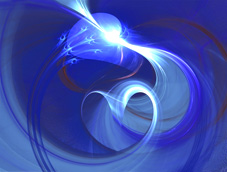 However, the soul, which is the garb within which the Line is clothed… The garb (levush, a “garment”, corresponding to the tzelem, “form” or “likeness”) is an intermediary between the soul and the body, relating to the body. When the soul clothes itself in this garb, it executes the necessary functions in accordance with the nature of that body, but when it is outside of the body, it does not act in that way. This is the garb with which the Holy One, blessed be He, clothes the soul when it enters the body, and the Zohar (Mishpatim 96b) explains that if it were not for this garb, the soul would have no connection whatever with the body. Prior to its entry into this world, the soul was like an angel without an evil inclination and without free will. However, on entry into the body, the soul became invested with an evil inclination and with free will. This is the result of its being clothed in this garb of the body.
However, the soul, which is the garb within which the Line is clothed… The garb (levush, a “garment”, corresponding to the tzelem, “form” or “likeness”) is an intermediary between the soul and the body, relating to the body. When the soul clothes itself in this garb, it executes the necessary functions in accordance with the nature of that body, but when it is outside of the body, it does not act in that way. This is the garb with which the Holy One, blessed be He, clothes the soul when it enters the body, and the Zohar (Mishpatim 96b) explains that if it were not for this garb, the soul would have no connection whatever with the body. Prior to its entry into this world, the soul was like an angel without an evil inclination and without free will. However, on entry into the body, the soul became invested with an evil inclination and with free will. This is the result of its being clothed in this garb of the body.Just as the garb of the soul affects the way it acts in the body, so too all the different garbs of the various Sefirot and Partzufim affect and change the action of the Line clothed within them in accordance with their particular nature. We find this idea in the statement in the Zohar (Terumah 139a) that bronze is a garment worn by the Indwelling Presence in order to give nourishment to the realm of the husks (kelipot). Similarly, the Tikkuney Zohar (Tikkun 22, 65a) states that “The clothes that He wears in the evening, He does not wear in the morning…”). For the essence is always one and the same, but He clothes Himself in different garbs and executes all the different actions that He performs according to the nature of these various garbs. We see this written explicitly: “And He wore righteousness as a coat of mail and He put on garments of vengeance for clothing ” (Isaiah 59:17). Thus, when the Supreme Will wanted to bring in the Line to govern the Residue, which is as distant from Him as the body from the soul, an intermediary garment was needed between them, just as the soul needs an intermediary garment in order to connect with the body. It is through this garb that He does what He has to do in the Residue.
…is made to match each Partzuf according to what it is… Each Partzuf has its own distinctive “garb” depending on the governmental power which it needs to receive from the Line, which is equal on all levels. The Partzufim can only receive from the Line through this garment. If so, this garment must exist in each Partzuf according to its nature, in order that the Line may act equally through each one of these different garbs.
…and this is what distinguishes the Partzufim from one another. For all the different aspects of the Sefirot above correspond to the order of the Form of Adam as we find it here below in this world (as will be discussed later). For this form is rooted above on all levels. And just as we can make inferences from the Sefirot to add to our understanding of the Form of Adam, so we can make inferences about the Sefirot from the Form of Adam as we find it in this world, as will be discussed later. Now we see that all human bodies have the same general form. The differences between one person and another in terms of character traits, wisdom and intelligence lie in the soul. Similarly, the differences in one and the same person at different times and in all that pertains to the conduct of the body and its actions derive from the soul.
It is truly the same in the upper realms, and so you will find throughout the writings of the ARI and in all the teachings of Rabbi Shimon bar Yochai. The fundamental concept here is that of the mental powers (mochin): these are the inner essence (pnimiyut, the “soul”) of all the Partzufim. They are the source of all government, and each Partzuf is governed by its mental powers. These mental powers change in the Partzufim themselves at different times, thereby affecting and changing their nature and functioning, as I will explain to you below in its proper place. These mental powers are what we call the “garb” of this inner Line, which is the soul of the souls. It is through these different garbs that the Partzufim are distinguished from one another in all their various different aspects, both qualitatively — whether they incline towards Kindness, Judgment or Mercy — and quantitatively, in terms of whether they are great or small in stature and value. For according to what they are, so they receive light from the Line garbed within them.
Thus: The difference is not in the Line but in its garb, which is the soul. For the difference between the different Partzufim in terms of their stature could be seen as problematic, because this depends upon how close to or far away from Eyn Sof, blessed be He, they are. But since the Line of Eyn Sof, blessed be He, is completely equal on all levels, it would seem that they should all be equal in stature. However, as I have explained, although the Line is exactly the same, the garments are different, and each Partzuf receives from the Line according to the nature of the garb. Thus the Partzufim may be great or small depending on the preparedness of the soul of any given Partzuf to receive from the Line within it.
From the discussion in this and the previous Opening, you should understand that there are three aspects to the Sefirot: (1) the vessels; (2) the mental powers; (3) the inner and encompassing lights. The vessels are the different levels of the Residue — the laws that exist after the concealment of perfection. Through the inner and encompassing lights, Eyn Sof is found on all the different levels. The mental powers are the garments (of the Line) and are made to suit each Partzuf depending on what it is. It is through these mental powers that Eyn Sof, blessed be He, connects with and governs each one according to its particular nature, as discussed above.
The mental powers include a Nefesh, Ruach, Neshamah, Chayah and Yechidah in their own right. The Chayah and Yechidah here are not the same as the encompassing lights of which we speak in connection with the “inner and encompassing lights” (see Opening 28), for otherwise, various passages in the writings of the ARI would be completely contradictory. However, I will not expand on this now, because it is something that is quite visible in the passages which speak about the mental powers and those which speak about Eyn Sof, blessed be He, and the encompassing level. The way to resolve the contradictions is as I have explained here, and this way you should find everything to be clear. For the lights have their own individual way of spreading forth, and thus they reach the Partzufim in the same way discussed there, be it in the “garb” of Wisdom or the “undershirt” of Understanding, all as discussed there.
In the prophetic vision, the Partzufim thus appear with their mental powers together with the Line, which is the inner essence equal in all of them.
(Rabbi Avraham Greenbaum is the director of Azamra (http://www.azamra.org/).
The 138 Openings of Wisdom is available for purchase online at http://www.azamra.org/Product_pages/openings.htm)
The 138 Openings of Wisdom is available for purchase online at http://www.azamra.org/Product_pages/openings.htm)




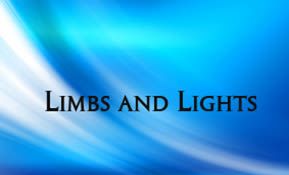
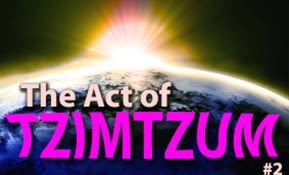
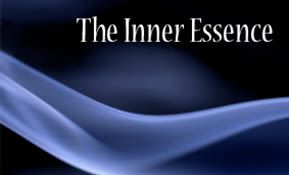
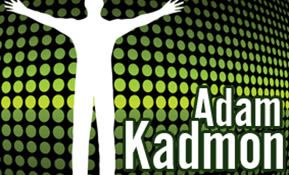

Tell us what you think!
Thank you for your comment!
It will be published after approval by the Editor.